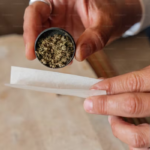Key Takeaways:
- Growing Environmental Concern: The cannabis industry, like others, is facing increasing pressure to adopt sustainable practices due to the environmental impact of traditional plastic and non-recyclable packaging.
- Consumer Demand is a Driving Force: A significant majority of cannabis consumers (78% in a recent survey) prefer brands that offer biodegradable and recyclable packaging, making sustainability a crucial factor for brand appeal and loyalty.
- Economic and Brand Advantages: Embracing eco-friendly packaging can boost brand reputation, attract a growing segment of environmentally conscious consumers, and potentially lead to long-term cost reductions through incentives and lower waste disposal fees.
- Biodegradable Materials are Key: The shift involves using materials that naturally decompose, such as hemp, corn starch (PLA), and bamboo, which leave minimal environmental footprints.
- Recycling Innovations are Critical: Beyond new materials, the industry is focusing on using recycled content (e.g., cardboard, glass) and implementing innovative take-back programs (like TerraCycle) to improve recycling rates.
- Certifications Build Trust: Green packaging certifications (e.g., FSC, USDA Certified Biobased, ASTM International) are essential for validating sustainability claims, increasing consumer trust, and providing a competitive edge.
- Cutting-Edge Solutions Emerge: Innovations include compostable packaging (breaking down in compost conditions), reusable packaging programs (reducing waste through refilling), and smart packaging technologies (providing transparency and consumer engagement via QR codes and RFID).
- Challenges Exist but Solutions are Developing: Initial higher costs and navigating complex regulatory compliance are challenges, but long-term benefits and collaboration with experts are helping brands overcome these hurdles.
- Consumer Education is Crucial: Educating consumers on proper disposal and the benefits of sustainable choices is vital for the widespread adoption and success of eco-friendly packaging.
- Future is Green and Innovative: The cannabis packaging landscape will continue to evolve with bioplastics from new sources (algae, mushrooms), global sustainability standards, and a deeper integration of sustainable practices into the industry’s core values.
As cannabis enthusiasts and businesses alike become increasingly aware of environmental concerns, eco-friendly pre-roll packaging has emerged as a defining trend in 2025. This move towards green packaging isn’t just good marketing—it’s crucial for the planet. Let’s explore how sustainable packaging is reshaping the cannabis industry.
Why Eco-Friendly Pre-Roll Packaging Matters
Environmental Impact of Traditional Cannabis Packaging
Traditional cannabis packaging often includes plastics and non-recyclable materials that contribute to waste and pollution. A 2023 environmental impact study by the Sustainable Packaging Coalition showed that cannabis packaging generated approximately 150 million pounds of waste annually, emphasizing the urgent need for eco-friendly solutions.
Consumer Demand for Sustainability
Today’s consumers are increasingly eco-conscious, demanding sustainability across all products. In a recent survey, 78% of cannabis consumers indicated they would prefer brands offering biodegradable and recyclable packaging.
Economic and Brand Advantages
Eco-friendly packaging can elevate brand reputation, attract environmentally conscious customers, and even reduce costs in the long run due to incentives and reduced waste disposal fees.
The Shift to Biodegradable Packaging
What is Biodegradable Packaging?
Biodegradable packaging is designed to naturally decompose, leaving minimal environmental footprints. Materials such as hemp, corn starch, and bamboo are now popular options for cannabis pre-rolls.
Hemp-Based Packaging Solutions
Hemp, a versatile and sustainable plant, is an ideal candidate for packaging materials. Not only does it biodegrade quickly, but cultivating hemp also requires less water and pesticides compared to traditional crops.
Corn Starch and PLA
Polylactic Acid (PLA), derived from corn starch, has gained traction in the cannabis industry. PLA packaging breaks down into carbon dioxide and water within months under industrial composting conditions.
Recycling Innovations in Cannabis Packaging
Recycled and Recyclable Materials
Recycled packaging made from post-consumer waste is another key trend. Using recycled cardboard and glass not only reduces landfill waste but also minimizes the extraction of new raw materials.
Innovative Recycling Programs
Companies like TerraCycle have partnered with cannabis brands to introduce take-back programs, making recycling packaging easier and more efficient for consumers.
Green Packaging Certifications
Importance of Certifications
Certifications like FSC (Forest Stewardship Council), USDA Certified Biobased, and ASTM International standards ensure packaging meets rigorous sustainability criteria.
Benefits to Brands
Brands displaying these certifications benefit from increased consumer trust and a competitive edge in the market, appealing directly to environmentally focused customers.
Cutting-Edge Innovations in Sustainable Packaging
Compostable Packaging
Compostable solutions, certified to break down completely under compost conditions, offer a premium alternative to conventional packaging. Brands like PureCann have adopted compostable tubes and wrappers, contributing significantly to reducing environmental waste.
Reusable Packaging Solutions
Reusable packaging programs encourage consumers to return empty containers for refilling, significantly cutting down waste. The cannabis brand Evergreen Cannabis successfully implemented a reusable pre-roll container program in 2025, reducing their packaging waste by 40%.
Smart Packaging Technologies
Smart technologies, including QR codes and RFID tags, allow consumers to access detailed information on packaging sustainability, recycling instructions, and company eco-initiatives, further promoting transparency and consumer engagement.
Challenges and Solutions in Eco-Friendly Packaging
Cost Implications
While sustainable packaging initially appears more expensive, long-term benefits such as customer loyalty, reduced waste management costs, and potential governmental incentives balance out the investment.
Regulatory Compliance
Navigating regulatory frameworks can be challenging for cannabis companies. Collaborating closely with sustainability experts and compliance specialists helps brands effectively manage these complexities.
Consumer Education and Adoption
Educating consumers about recycling, composting, and the environmental impact of their choices is crucial. Clear instructions and marketing efforts highlighting sustainability initiatives greatly enhance consumer participation and brand loyalty.
The Future of Cannabis Packaging: 2025 and Beyond
Ongoing Innovation
The future will see even greater innovation in sustainable cannabis packaging, driven by technological advancements and increased consumer awareness. Bioplastics derived from algae, mushrooms, and even agricultural waste will further diversify eco-friendly options.
Global Industry Standards
The establishment of global sustainability standards for cannabis packaging is likely, ensuring consistency and broader environmental impact. Leading brands are already advocating for industry-wide adoption of stringent sustainability standards.
Conclusion: Eco-Friendly Packaging—A Lasting Impact
Eco-friendly pre-roll packaging is not just a trend—it’s a necessary evolution for the cannabis industry. Embracing sustainable practices benefits brands, consumers, and, most importantly, the environment. As we progress through 2025 and beyond, adopting green packaging solutions will define market leaders and significantly influence consumer choices. Sustainability is not merely about packaging—it represents the core values of a responsible, forward-thinking cannabis industry.
Frequently Asked Questions (FAQs):
Why is eco-friendly packaging important for the cannabis industry in 2025?
Eco-friendly packaging is crucial because traditional cannabis packaging contributes significantly to waste and pollution (estimated 150 million pounds annually). Consumers are increasingly demanding sustainable options, and adopting green packaging offers environmental benefits, enhances brand reputation, attracts eco-conscious customers, and can lead to long-term cost savings.
What are some common materials used in biodegradable cannabis packaging?
Popular biodegradable materials include hemp-based plastics, corn starch-derived Polylactic Acid (PLA), and bamboo. These materials are designed to decompose naturally, reducing environmental impact.
How does biodegradable packaging differ from recyclable packaging?
Biodegradable packaging breaks down naturally into elements like carbon dioxide and water, often in a composting environment. Recyclable packaging can be reprocessed into new products, reducing the need for virgin materials. Both are important components of eco-friendly solutions.
Can eco-friendly packaging save cannabis companies money?
While initial costs might be higher, eco-friendly packaging can lead to long-term savings through reduced waste disposal fees, eligibility for sustainability incentives, and increased customer loyalty, which can boost sales.
What role do certifications play in sustainable cannabis packaging?
Certifications like FSC, USDA Certified Biobased, and ASTM International standards verify that packaging meets rigorous sustainability criteria. This builds consumer trust, validates a brand’s commitment to the environment, and provides a competitive advantage in the market.
Are there any challenges for cannabis brands adopting eco-friendly packaging?
Yes, challenges include the potentially higher initial cost of sustainable materials, navigating complex and evolving regulatory compliance for cannabis products (e.g., child-resistance, labeling), and the need to educate consumers on proper disposal methods.
How are companies making packaging reusable in the cannabis industry?
Some cannabis brands are implementing reusable packaging programs where consumers can return empty containers for refilling. This significantly reduces waste by extending the lifespan of the packaging.
What is “smart packaging” in the context of sustainable cannabis?
Smart packaging uses technologies like QR codes and RFID tags to provide consumers with detailed information about the packaging’s sustainability, recycling instructions, and the company’s eco-initiatives. This promotes transparency and consumer engagement.
What are future trends expected in sustainable cannabis packaging?
Future trends include the development of new bioplastics from sources like algae and mushrooms, the establishment of global sustainability standards for cannabis packaging, and even more personalized packaging solutions driven by consumer preferences.
Does eco-friendly packaging compromise the quality or safety of pre-rolls?
No, the goal of eco-friendly packaging is to maintain or even enhance product quality and safety while reducing environmental impact. Manufacturers are developing innovative sustainable materials that meet all regulatory requirements for child-resistance, tamper-evidence, and product preservation.





